Published: August 15,2022
By George Nsamba
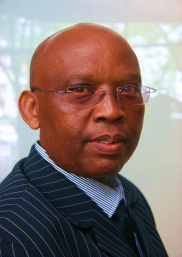
The effects of the Belt and Road Initiative(BRI) have continued to be felt all over the world especially in Africa as a developing continent and in Southern Africa in particular.
This article will highlight some of the projects that have been undertaken in Southern African countries because of BRI and the achievements that have emanated from these projects.
Belt and Road initiative was not started to develop only roads as the name may depict but as Mr Kandjoze (the Namibian Minister of economic development) put it, “The Belt and Road Initiative advocates for peace and cooperation, openness and inclusiveness, mutual learning, and mutual benefit. It promotes policy coordination, facilitates connectivity, unimpeded trade, financial integration,and people-to-people bonds as its major goals, advances practical cooperation in all fields and works to build a community of shared interests, responsibility and destiny featuring mutual political trust, economic integration, and cultural inclusiveness,”
It is with the above understanding that the BRI benefits to Southern Africa will be approached in this article. It is not only roads that have been improved by the BRI, but a connection between Southern Africa and China that benefits both parties beyond roads and infrastructure.
The Southern African countries included here are Namibia, South Africa, Botswana, Angola, Zambia, Mozambique, and Malawi.
Namibia
Some of the major benefits of BRI in Namibia are evident in projects like the Husab Uranium Mine, the Walvis Bay Container Terminal, and several roads construction projects to mention just a few.
Husab Uranium mine which is located near the town of Swakopmund in Namibia was constructed as a result of the long standing relationship between Namibia and China and is said to be the third largest Uranium mine in the world. This is one of the examples of the benefits of BRI which advances practical cooperation between China and the countries where BRI projects are implemented. The Mine started producing uranium oxide for the export market in December 2016, which was celebrated as asignificant event in the history of Namibia. Mining is expected to last nearly 20 years.
The total investment for the Husab Mine is over US$ 5 billion, and more than US$ 2 billion was required to build the Mine. This is a significant investment in Namibia that has multiple benefits to the people of Namibia and Africa in general. According to Namibian uranium Association this mine will add 5-7% to Namibia’s GDP. It is said that more than 4 500 temporary jobs were created, thereby assisting the National Agenda of the Republic of Namibia by reducing unemployment. The mine is operational and is said to have more than 1600 permanent employees and six hundred contractor employees, making it one of the biggest employers in the Namibia in addition to substantial royalties that are received from the proceeds of the mine
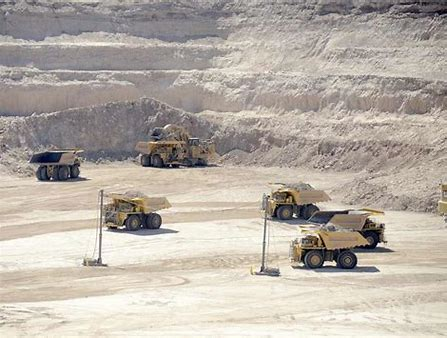
Picture of Husab mine adopted from Namibiansun.com
As most countries are striving to become international trading Hubs, Namibia is not left behind. A $400-million-U.S. container terminal was developed in Walvis Bay built by China Harbour Engineering Company Ltd. The construction work started in 2014 when the African Development Bank provided the 300 million U.S. dollars funding.
The terminal is built on forty hectares of landreclaimed from the sea by China Harbor Engineering Company Ltd (CHEC). The container handling capacity of the new terminal was increased from the original 350,000 containers to 750,000 per annum. Over the five years of construction, the projectemployed more than 2,000 Namibians and provided on-site training to over eight hundred local employees who gained new skills that can be used elsewhere.
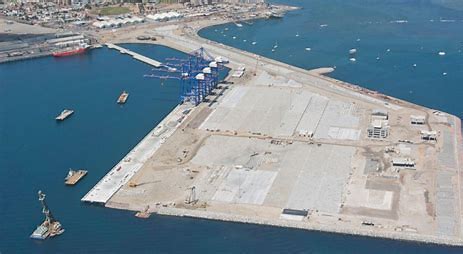
Picture of Walvis Bay container terminal under construction. Picture developed from erongo.com.na
SOUTH AFRICA
In December 2010, South Africa was invited to join China in BRICS group of emerging economies. BRICS is an acronym that was developed to represent Brazil, Russia, India, China, and South Africa. This was yet another milestone in the relationship between China and South Africa where in the same year China was South Africa’s largest trading partner.
As mentioned above, BRI encompasses development projects as well as relationship building between China and other Countries. Some of the benefits of these relationships can be demonstrated by the examples below:• China investment where Industrial & Commercial Bank of China (ICBC)’s took a 20% stake in one of South African’s largest banks (Standard Bank) in 2007 for a staggering USD 5.5bn. This is quite a huge Foreign Direct Investment (FDI) in South Africa.• A $2.5-billion loan from the China Development Bank to fund Power utility Eskom received its Kusile power station • A $10-billion investment from Chinese automaker Beijing Automotive Industry Company (BAIC) to expand its plant based in Coega, Port Elizabeth
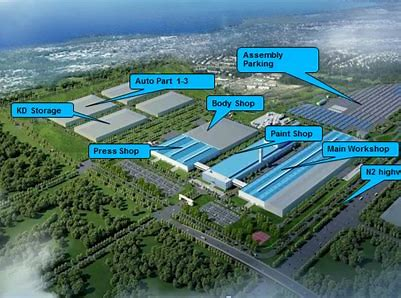
Picture of Coega Development Corporation (BAIC) adopted from coega.co.za• A Hisense Group factory which is an appliance manufacturer that assembles items like television sets, fridges etc, and a Hebei Jidong Development Group cement plant• China’s Powerway Renewables and Suntech Power holdings involved in renewable energy projects in South Africa• Numerous China Malls that have developed in most of the big South African Cities which have contributed in availing goods to the public at relatively affordable prices and employing several South Africans to manage the businesses
As of 2015/16, it is reported that there were over 140 medium-sized or large Chinese companies in South Africa with a combined investment of US$13 billion, employing around 30,000 South Africans. This is because of Initiatives of which BRI is the main driving factor that has enabled large Chinese investments which has increased both FDI and employment.
BOTSWANA
In January 2021, Botswana became the 46th African nation to sign up to BRI. This at the back foot of the relationship between the government of Botswana and China that allowed the development of Botswana innovation Hub. The innovation hub is the first stage of the development of a Science and Technology Park that is designed to include offices, industrial units, and hotels. The project is estimated to cost US$56 million. The Main Contractor for construction of the innovation hub facility is a joint venture between Caitec Botswana and Jiangsu ZhengtaiConstruction Group Co. Apart from the huge capital investment, employment of construction staff is an added advantage to reduction of unemployment in Botswana.
ANGOLA
China and Angola signed a Memorandum of Understanding (MOU) for cooperation on the Belt and Road Initiative (BRI) during the 2018 Forum on China-Africa Cooperation (FOCAC). This cooperation was evidenced by the arrival of Chinese medical experts in October 2020 to assist Angola in fighting the COVID 19 pandemic. Several otherprojects that indicate the benefits of BRI include the following:• Chinese enterprise Huawei expects to complete a technology park worth 60 million U.S. dollars soon.• The Belo Monte substation which is a power project undertaken by Chinese firm and is expected to provide electricity to 300,000 households and benefit more than 2.5 million people.• The Chinese ambassador to Angola, Gong Tao indicated several projects that have been undertaken by Chinese enterprises which include: o Repair/ built 2,800 km of railways, o Build 20,000 km of roads, and o Built more than 100,000 sets of social housing, more than 100 schools, and more than 50 hospitals• Guangde International Group which invested 230 million U.S. dollars in the “Vida Gude” shopping centres, which has eleven factories where they sell made in Angola furniture. The shopping centre has roughly two hundred employees and the factories employ 1,185 people. • The construction of hospitals in the cities of Dundoand Mbanza Kongo; and water supply systems in different municipalities.• The construction of the electrical production plant of Soyo, supported by the Industrial and Commercial Bank of China and built by China Machinery Engineering Corporation (CMEC).
ZAMBIA
Muna Ndulo a Professor of Law Cornell Law School and Director of Cornell University Institute for African Development stated that “Zambia’s underdevelopment is not the result of too much foreign investment but a lack of foreign investment”. It is this lack of foreign investment that has stagnated infrastructure and other growth not only in Zambia but in Africa in general.
It is with the above notion that China investments in Zambia are appreciated. China started investing in Zambia as far back as the 1970s when it built a railway linking landlocked Zambia with Tanzania which eliminated the country’s dependence on South Africa and Rhodesia, which were then led by white-minority governments. The criticism of that project then, is like the current criticism from the west regarding Chinese investments in Zambia. The west criticises investments in Zambia, yet the same west is not providing the required investments in Zambia while China has invested substantially.
Alex Ng’oma, a political analyst at the University of Zambian in one of his statements, states that “Zambia at the moment appears to be much better than it’s been in a very long time,” because of investments made by China. “We’ve got roads being built in areas where we didn’t imagine it, we’ve got hospitals and schools and things like that.” He continues to say.
China’s presence and investments are seen in the vast networks of roads that have been built thus radically updating the ageing transport infrastructure. Surgeries that have been built as well as schools not to mention traders that have changed the trading outlook in Zambian cities.
Several Chinese state-owned farms for example Jonken farm have accelerated commercial farming in Zambia. There are also private Chinese entrepreneurs who are farming on a small scale thus all contributing to sustainable food self-sufficiency in Zambia.
Multi-Facility Economic Zones and industrial parks such as the ones in Chambishi and Lusaka towns have completely changed the landscape.
Other projects that have developed because of the cooperation between China and Zambia include:• The construction of a 750 megawatts power project in Zambia funded by the Exim Bank of China as well as other financiers• The construction works of the Kafue Gorge Lower Hydropower Station not far from Lusaka, the country’s capital• Many state-owned companies like Aviation Industry Corporation of China (AVIC), Sino Hydro Corporation, China Jiangxi International, China Henan Cooperation, China Sichuan and many others have invested heavily in Zambia.
China is therefore contributing to Zambia’s development regarding infrastructure projects in roads, bridges, airports, power, schools, hospitals, mining, and agriculture just to name a few. Lusaka times in 2018 reported that Zambia-China trade in 2016 was estimated at $2.6 billion, and Chinese investment in Zambia by 2018 was approximately $4billion.
MALAWI
Malawi has not been left behind as far as China and BRI projects are concerned. The following are some of the projects that evidence the contribution that China has made to development of Malawi:• The concessional loan for Lilongwe Water Program worth 67.7 million U.S. dollars • An $80 million loan from the Export Import Bank of China to construct a university for science and technology • Construction of the Parliament Building, BinguNational Stadium and conference centre, and• The construction of a dual carriageway in Lilongwe worth 50 million dollars grant and a 15 million dollars grant for the construction of 5 community technical colleges.
These are all evidence of the achievements of BRI within Malawi. For this reason, Malawi will never be the same again due to this infrastructure upliftment. This upliftment could not be achieved by the former colonisers whose interest has only been criticism of China’s presence in Africa using the “debt trap propaganda”.
MOZAMBIQUE
China Railway 20th Bureau Group Corp, or CR20G, which is a subsidiary of China Railway Construction Corp Ltd, is helping farmers in Mozambique stable and high yields by introducing China’s practical agricultural technologies and employing modern machinery.
CR20G built a rice processing plant in Xai-Xai, capital of Gaza province in Mozambique in 2017with the help of the China-Africa Development Fund. This project is said to be China’s largest rice planting project in Africa for more than four years. In June 2021 the project harvested (2,400 hectares) and 16,600 metric tons of rice and created a total of 14,000 jobs for Mozambicans in farming.
Other major projects include:• The popular 680 meters Maputo–Katembe bridge which opened to traffic in November 2018 and is said to be the longest of its kind in Africa. The project is said to have created 3,788 jobs during it construction.
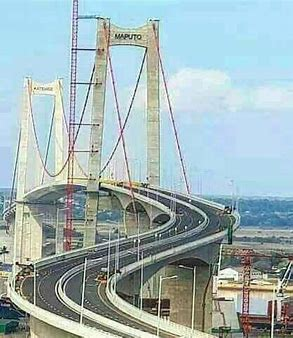
Photo adopted from zwnews.com• The development of offshore natural gas in Area 4 in the northern Ruvuma Basin which is critical to the economic development of Mozambique and the energy sector in Africa in general.• The Nacala Corridor Railway, Maputo Bay Bridge, the EN6 Highway, and the Beira fishing port have all been completed and put into operation.• Several resort hotels and housing projects undertaken and operated by Chinese companies have sprung up and these have improved tourism in Mozambique by offering the required accommodation.• Exim Bank of China financed the digital TV transformation project which was implemented by StarTimes
By 2021, nonfinancial direct investment by Chinese organisations in Mozambique had reached almost $2billion, and total investment was almost $8 billion.
All the above-mentioned projects are just those that stand out and not the only ones where China has invested tremendously in Southern Africa. Many jobs have been created, roads have been constructed, housing has been developed, Agriculture has been improved, people have gained skills that they did not have before, and all this thanks to BRI and the cooperation between China and African countries.
George Nsamba is a Business advisory & Risk management practitioner based in Johannesburg
 Africa -China Review Africa -China Cooperation and Transformation
Africa -China Review Africa -China Cooperation and Transformation
